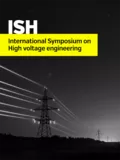Summary
With the energy transition in Germany, more transmission capacity is needed in order to connect regions with different energy supply and demand of renewables. In order to enhance transmission capacity, three high-voltage direct current (HVDC) corridors are currently projected in Germany, which, due to political circumstances, are realized as cable lines. If transmitting energy with HVDC cables, cable accessories are needed and have to be designed. The design of these DC accessories is demanding since important data for conducting electrical field simulations is often not available. The conductivity is the relevant parameter for conducting electric field simulations which itself shows strong dependencies of temperature and polarizing voltage. When performing conduction current measurements, the conductivity can be measured in dependence on temperature and polarizing voltage, thus yielding enhanced data for simulations. However, other effects as e.g. space charges further alter the electric field but this information is not included in normal polarizing voltage and temperature dependent conduction current measurements. The influence of space charges on the electrical field distribution, however, can be measured by space charge measurements. Out of the combination of space charge measurements and conduction current measurements, it is shown how a spatially resolved temperature and polarizing voltage dependent conductivity within a single layer arrangement can be calculated. This calculated conductivity can yield better understanding of processes within the dielectric. For conducting the measurement, a setup is designed for allowing parallel measurements of space charges and conduction currents at different temperatures and polarizing voltages. It is mentioned, that these measurements should be taken in parallel since the nature of these measurements show low reproducibility due to strong influence of different chemical compositions during the production process if using different samples. For conducting space charge measurements, the laser induced pressure pulse method (LIPP) was chosen since it yields higher spatial resolution in contrary to the pulsed electro acoustic method. Furthermore, the LIPP method was, as known to the authors, combined for the first time with parallel polarization and depolarization current measurements.
Additional informations
| Publication type | ISH Collection |
|---|---|
| Reference | ISH2017_364 |
| Publication year | |
| Publisher | ISH |
| File size | 744 KB |
| Pages number | 6 |
| Price for non member | Free |
| Price for member | Free |



